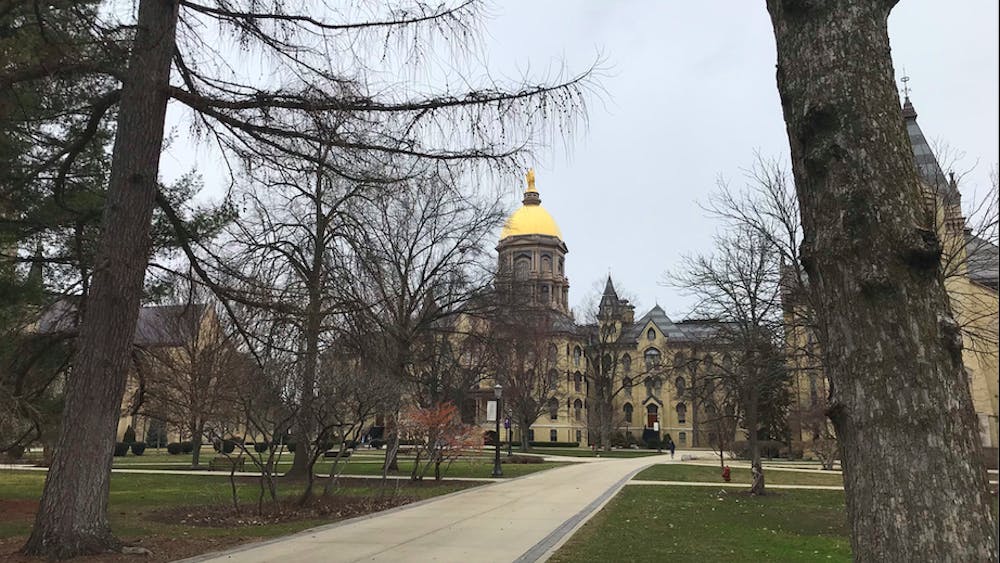Every year, thousands of students attend the Student Activities Office (SAO) Activities Night to sign up and learn about the different clubs, organizations and campus partners that are present at Notre Dame.
With the ongoing pandemic making social distancing a necessity, the event — rebranded as Activities Fair — looked a little different. Instead of storming to the booths, with just one click students were able to enter the participating groups’ Zoom calls and talk with representatives Sunday from 2 to 6 p.m.
According to assistant director of student clubs Erin Riordan, SAO had initially sought to host the event in-person. However, logistical concerns and professional feedback prompted the group to organize the event virtually instead.
“Last year we received 3,000 to 4,000 students,” Riordan said. “Our concern was if we have it outside, how do we properly manage the lines and waiting areas if such a large capacity of students come? We asked students, talked to our campus partners, talked to Risk & Management to pose them a full list of pros and cons.”
Even though, students were not able to attend in-person, Riordan said holding the event in this manner allowed for greater accessibility and efficiency.
“I think what’s really cool about having [the event] virtually is that students have been able to look at all the clubs at once, fill out the interest sheets they want to fill out but not actually go into the Zoom meetings, which makes it more accessible than an in-person fair,” she said.
Senior Mariana Ferré, who attended the event, echoed Riordan in acknowledging the virtual format’s benefits.
“I liked that I could see everything. I feel that sometimes when we’re in the stadium it’s so packed I might miss a table accidentally. So it’s nice to have everything in one place,” Ferré said
For senior Jessica Igiede, the president of on-campus dance group Project Fresh, the virtual fair was an opportunity to have students become acquainted with the club. However, Igiede said there were some shortcomings.
“Usually in person, people are just able to see us dancing and having fun, so you’re able to see our vibe,” she said. “Here, we hope that people are kind of getting that from the slide.”
The groups’ presentations were divided into time blocks. From 2 to 3 p.m., campus offices, student organizations and graduate student groups engaged with students. From 3 to 4 p.m., academic and athletic clubs had their pitch. From 4 to 5 p.m., cultural and performing arts clubs were up. Finally, from 5 to 6 p.m., the different social service and special interest clubs talked about their work.
From Mariachi bands to juggling clubs, the approximately 300 clubs, organizations and campus partners strived to spark the interest of students.
“We’re happy to be here to engage more students and just say that you don’t have to have experience juggling. We have so many people who come back who have never juggled before. So don’t be intimidated, don’t let that be a factor in why you don’t come to Juggling Club,” said junior Tanner Waltz, vice-president of Juggling Club.
Even though the Puerto Rican Student Association’s (PRSAND) mission is to foster a greater community within the University’s Puerto Rican students, junior Diego Silva, PRSAND’s outreach coordinator, said the club also aims to shed light on the island’s culture — something the event enabled him to do.
“We really want to raise awareness about Puerto Rico’s culture and identity,” Silva said. “Coming to the Activities Fair is a good starting point to elevate our club.”
Riordan said the event was all about embracing the new ways in which people can connect amid a health crisis.
“There has been such a focus on what people and students can’t do. We want to be the office that helps people recognize what they can do,” Riordan said. “There’s still opportunity to find a community here. I know connection is difficult right now, but there’s so many clubs, people and offices that want to support students from the tri-campus community.”
Read More
Trending









